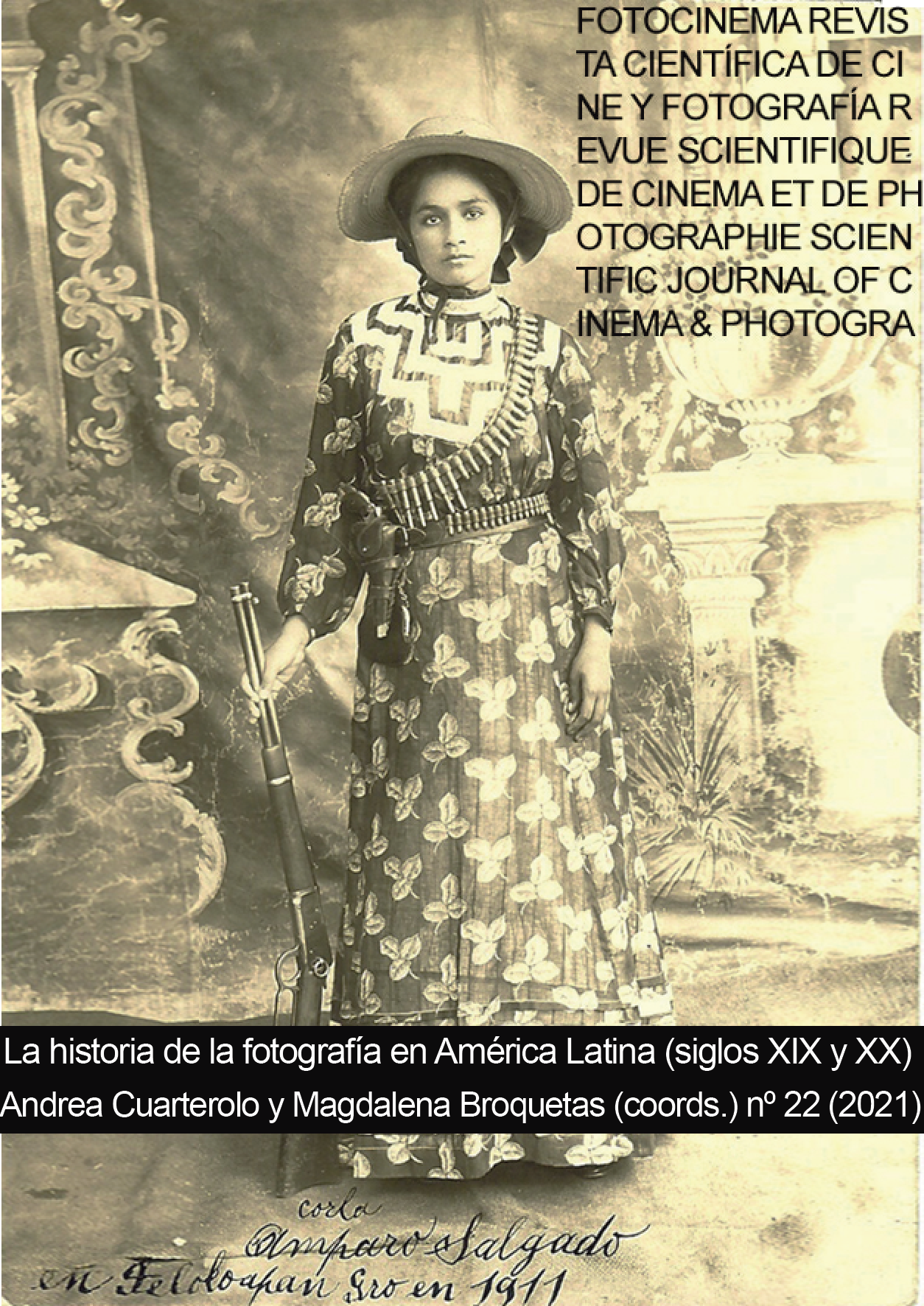Textual analysis of Anne’s face (Emmanuelle Riva) in Amour (Michael Haneke, 2012) from the Primordial Imago perspective
DOI:
https://doi.org/10.24310/Fotocinema.2021.vi22.11735Keywords:
Real, Primordial Imago, Consciousness, Shot reverse shot, FaceAbstract
In this chapter we will analyze the film Amour (Michael Haneke, 2012). We have chosen the scene —third sequence of the film— in which the main character Anne stares at a void in catatonic state of mind while her husband Georges tries to recover her consciousness without any success. We will use the Theory of the Text and our conceptual framework will be the study of the real as it has been elaborated by Jesús González Requena within the psychoanalytic field. More specifically, we will focus on his theorization based on the role of the Primordial Imago in the emergence of consciousness through shot reverse shot technique. We then propose as an exploratory hypothesis the existence of a footprint of the real that challenges the communicative exchange of this filmic technique.
Downloads
Metrics
Publication Facts
Reviewer profiles N/A
Author statements
Indexed in
-
—
- Academic society
- N/A
- Publisher
- Universidad de Málaga
References
Calhoun, D. (2012). Michael Haneke interview. Time Out London. 16 de noviembre de 2012. https://www.timeout.com/london/film/michael-haneke-interview-2
Deleuze, G. (2012 [1984]). La imagen-movimiento. Estudios sobre cine 1. Barcelona, España: Paidós.
Freud, S. (2016 [1920]). Más allá del principio del placer. Madrid, España: Amorrortu.
García guillén, S. (2015). El otro en el espejo: Amour de Michael Haneke. Área Abierta, 1 (15), 19-34.
Gracia ibáñez, J. (2015). ¿Una historia de amor? Vejez, cuidados y violencia a propósito de Amour (Michael Haneke, 2012). En R. Susín Betrán & . Pérez González (Eds.), Violencia y derecho a través del cine (pp. 23-42). Valencia, España: Tirant lo Blanch.
González Requena, J. (1995). El análisis cinematográfico. Teoría y práctica del análisis de la secuencia. Madrid, España: Editorial Complutense.
González Requena, J. (2015). En torno a la quemadura. Teoría del Texto vs. Teoría de la Comunicación. En R. Ezquizabal (Ed.), Metodologías I (101-142). Madrid, España: Editorial Fragua.
González Requena, J. (1997). La emergencia de lo siniestro. Revista Trama y fondo, 2, 51-75.
González Requena, J. (2010). Lo real. Revista Trama y fondo, 29, 7-28.
Haneke, M. (2013). Premio Príncipe de Asturias de las Artes 2013. En Fundación Princesa de Asturias. http://www.fpa.es/es/premios-princesa-de-asturias/premiados/2013-michael-haneke.html?texto=discurso&especifica=0
Heredero, C. F. (2013). De amor y piedad. Caimán Cuadernos de Cine, 12 (63), 32-33.
Hernández Les, J. A. (2013). Michael Haneke. La disparidad de lo trágico. Madrid, España: Ediciones JC Clementine.
Imbert, G. (2010). Cine e imaginarios sociales. Madrid, España: Cátedra.
Manon, H. S. (2010). “Comment ça, rien?”: Screening the gaze in Caché. En Price, B. & Rhodes, J. D. (Ed.), On Michael Haneke (pp. 105-126). Detroit, EE.UU.: Wayne State University Press.
Rhodes, J. D. (2010). The spectacle of skepticism: Haneke’s long takes. En Price, B. & Rhodes, J. D. (Ed.), On Michael Haneke (pp. 87-104). Detroit, EE.UU.: Wayne State University Press.
Roberts, S. (2012) Michael Haneke Talks Amour, His Inspiration for the Film, His Casting Decisions, Physical and Emotional Demands of the Film and Shooting the Film in French. Collider. 14 de diciembre de 2012. http://collider.com/michael-haneke-amour-interview/
Wheatley, C. (2009). Michael Haneke's Cinema: The Ethic of the Image. Brooklyn N.Y., EE.UU.: Berghahn Books.
Downloads
Published
How to Cite
Issue
Section
License
All contents published in Fotocinema Revista científica de cine y fotografía are protected under the Creative Commons Attribution-NonCommercial-ShareAlike 4.0 International (CC BY-NC-SA 4.0) license. All about this license is available in the following link: <http://creativecommons.org/licenses/by-nc-sa/4.0>
Users can copy, use, redistribute, share and exhibit publicly as long as:
- The original source and authorship of the material are cited (Journal, Publisher and URL of the work).
- It is not used for comercial purposes.
- The existence of the license and its especifications are mentioned.
There are two sets of authors’ rights: moral and property rights. Moral rights are perpetual prerogatives, unrenounceable, not-transferable, unalienable, imprescriptible and inembargable. According to authors’ rights legislation, Fotocinema. Revista científica de cine y fotografía recognizes and respects authors moral rights, as well as the ownership of property rights, which will be transferred to University of Malaga in open access. The property rights are referred to the benefits that are gained by the use or the dissemination of works. Fotocinema. Revista científica de cine y fotografía is published in an open access form and it is exclusively licenced by any means for doing or authorising distribution, dissemination, reproduction, , adaptation, translation or arrangement of works.
Authors are responsable for obtaining the necessary permission to use copyrighted images.














13.png)



